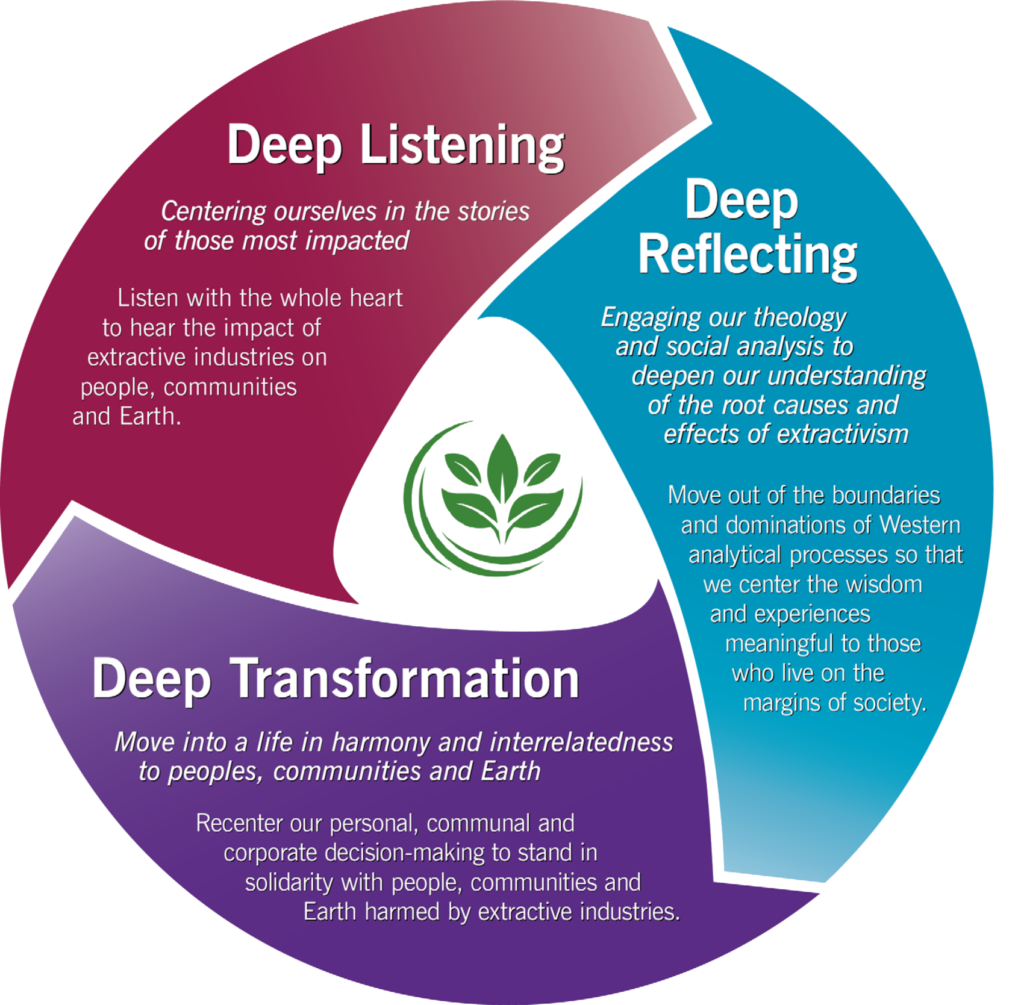
As we move forward in our conversations on extractivism, we engage in the familiar process of contemplative dialogue. We will engage in contemplative dialogue in each session and sometimes several times within a session.
- The First Session: SEEING—Deep Listening
- The Second Session: JUDGING—Deep Reflection
- The Third Session: ACTING—Deep Transformation

This process will help us center ourselves through deep listening and inner silence. We seek to create within and among ourselves a place of attentiveness that grounds us in our communal interconnectedness. It is in this circle that we make space for new ways of seeing and knowing. We open ourselves for something new to emerge. It is in this kairos moment that we seek metanoia—a conversion of heart.
Some helpful reminders as we enter our contemplative dialogue. Pay attention to what holds deep meaning for you. Open your body to feel the impact of another’s sharing. Let go of what you already know so that something new can emerge. Recall that we are transformed by conversations that we have never had before.
As we engage in the process, remember to speak briefly, share what matters in a few sentences. Speak to the center, not toward an individual. As you listen, look to the one who is speaking. Listen without thinking about what you are going to say. Relax and hold your own understandings lightly.
- SILENCE. The process begins with a period of silence (It is helpful for some participants to know the amount of time for the silence. If the time exceeds 10 minutes, allow time for silent walking as some participants center better with movement).
- SHARING. After the silence, allow some time for a brief sharing of how each person is coming to this moment.
- Here, the convener poses a question and invites each participant to respond briefly. (The purpose here is to create a space of trust and connection among the participants to move the group to a deeper level).
- The question might be, what has stayed with you or touched your heart as you listened and reflected?
- DIALOGUE. Then the convener shifts the group into a period of silence, perhaps with instrumental music. Again, it is helpful for some people to announce the length of time for reflection. Once the time of reflection seems sufficient, the dialogue begins. Here the group will consider the questions posed in a particular section of a session.
- It might be helpful to provide a brief period of silence in the transition between questions.
- During the dialogue, each person should be given an opportunity to share before anyone speaks a second time. It is helpful to encourage participants to build on one another’s insights, contribute their own insights, and be aware of the emergence of shared wisdom.
- Dialogue stops when there is a natural ending.
- INSIGHT. The convener concludes the process by inviting each person to share on two questions:
- How have you experienced this process of sharing?
- What did you notice about what was being created in your dialogue?